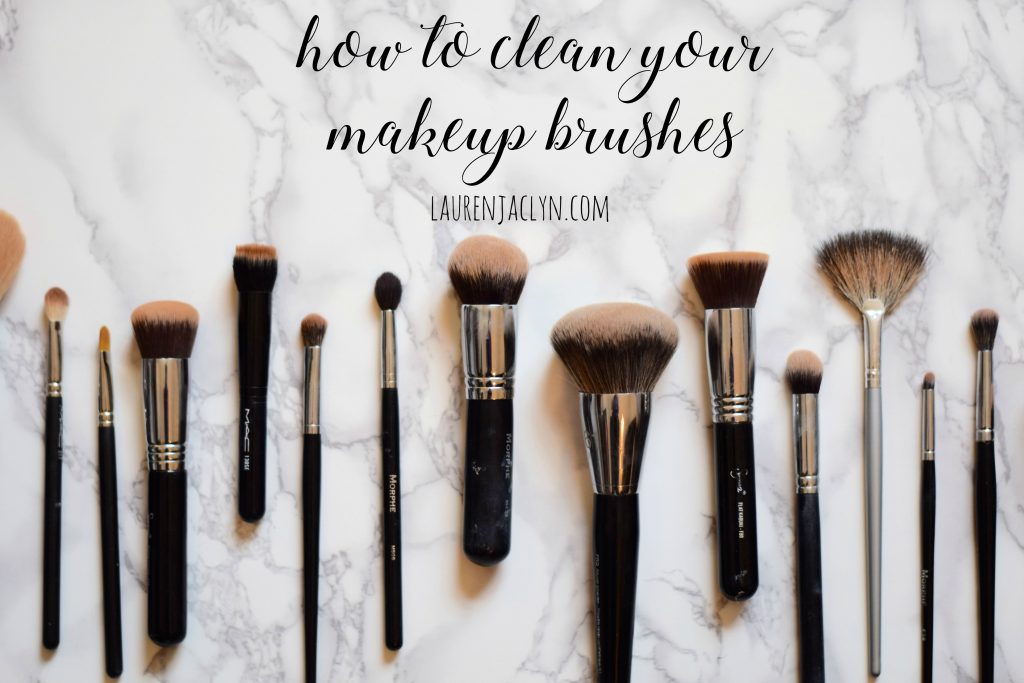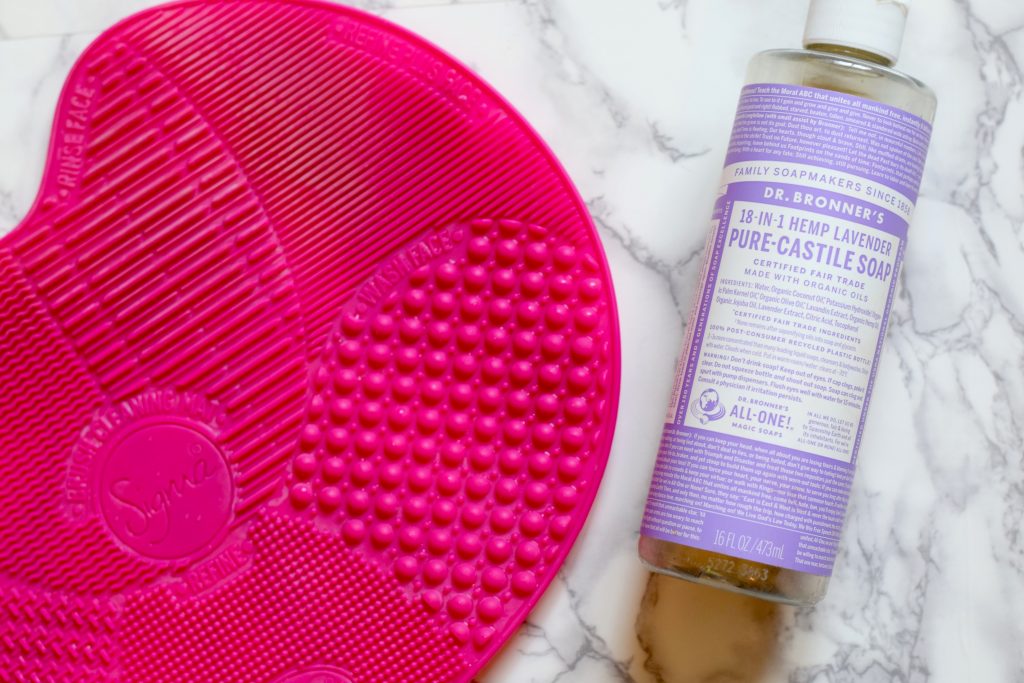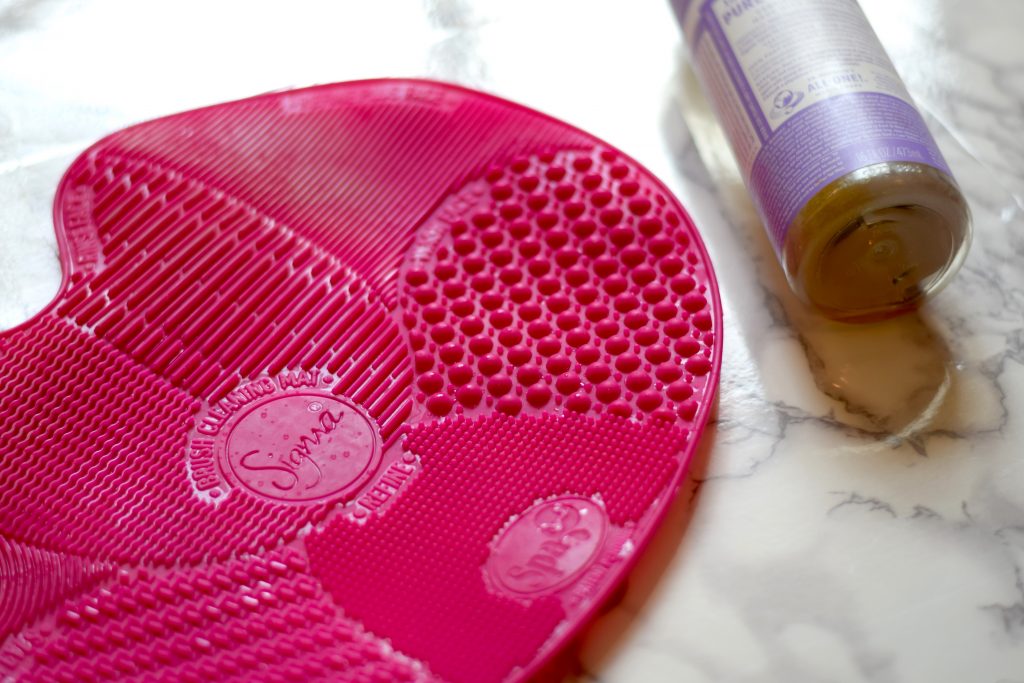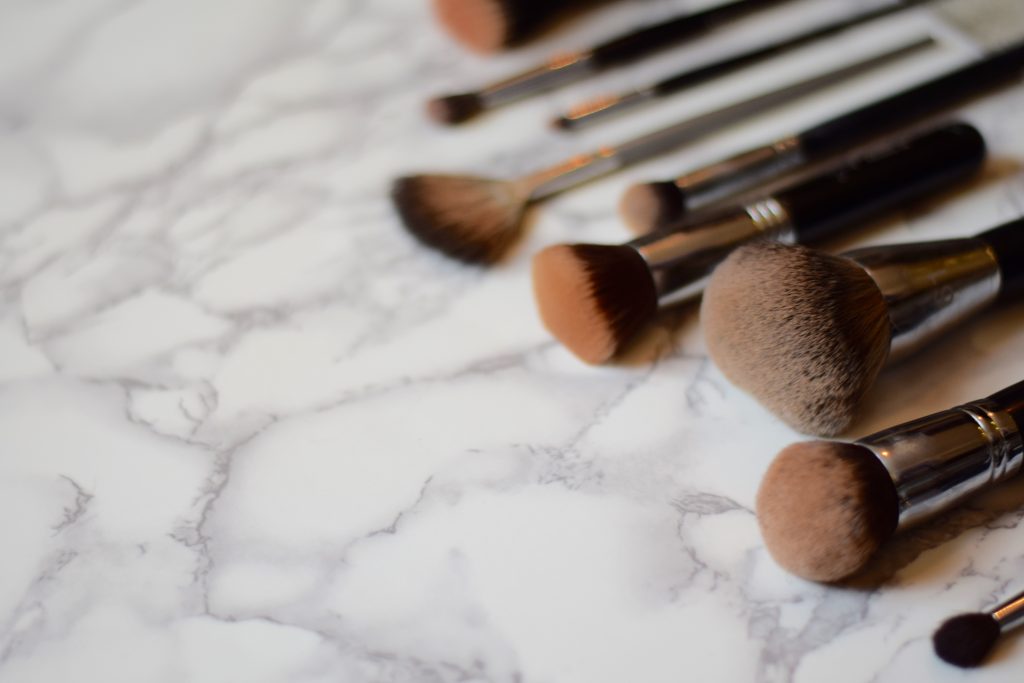 Cleaning makeup brushes is one of those chores that most girls hate doing – myself included. It ends up being super time consuming, your hands get dry from so much soap and water, and then you have to wait forever for your brushes to dry properly. Some of these things are unavoidable but I’ve discovered a few tips and tricks to make the process as quick and painless as possible. If you’ve never washed your makeup brushes before, you need to. Brushes and sponges harbor a lot of harmful bacteria that are bad for your skin and can even cause infections (yuck!). If you notice a lot of breakouts or irritation, it may be dirty brushes! For a list of all my favorite brushes, go here. To keep your brushes clean, wash them once a week or once every other week. I am not going to lie – I go much longer than this sometimes but only if I haven’t been using my brushes regularly. You should be following these guidelines for your personal makeup brush collection but if you’re a professional or you use your brushes on clients, you should wash them after every use.
Cleaning makeup brushes is one of those chores that most girls hate doing – myself included. It ends up being super time consuming, your hands get dry from so much soap and water, and then you have to wait forever for your brushes to dry properly. Some of these things are unavoidable but I’ve discovered a few tips and tricks to make the process as quick and painless as possible. If you’ve never washed your makeup brushes before, you need to. Brushes and sponges harbor a lot of harmful bacteria that are bad for your skin and can even cause infections (yuck!). If you notice a lot of breakouts or irritation, it may be dirty brushes! For a list of all my favorite brushes, go here. To keep your brushes clean, wash them once a week or once every other week. I am not going to lie – I go much longer than this sometimes but only if I haven’t been using my brushes regularly. You should be following these guidelines for your personal makeup brush collection but if you’re a professional or you use your brushes on clients, you should wash them after every use.
 My favorite soap to clean my brushes is something you may already have on hand! There is no need for a special brush cleanser – I love Dr. Bronner’s Pure Castile Soap. It is super concentrated so you don’t need a lot of product – less than 2 tablespoons cleans 50+ makeup brushes. This makes it a super affordable option! Side note: castile soap can be used for a multitude of things (dish soap, homemade face wash, floor cleaner, produce cleaner, etc.) I also love that it’s all natural and has no artificial colors or scents – you are going to be rubbing these brushes all over your face, after all.
My favorite soap to clean my brushes is something you may already have on hand! There is no need for a special brush cleanser – I love Dr. Bronner’s Pure Castile Soap. It is super concentrated so you don’t need a lot of product – less than 2 tablespoons cleans 50+ makeup brushes. This makes it a super affordable option! Side note: castile soap can be used for a multitude of things (dish soap, homemade face wash, floor cleaner, produce cleaner, etc.) I also love that it’s all natural and has no artificial colors or scents – you are going to be rubbing these brushes all over your face, after all.
 The thing that really changed the brush washing game for me is the Sigma Brush Cleaning Mat. It’s basically a silicone mat with different textured sections to help lather up and wash your brushes on. The bottom of the mat has suction cups so that you can attach it to your sink while you wash your brush collection! The different textures are divided and labeled for the easiest cleaning possible. There is a section to wash, refine, and rinse each brush – separated into face and eye brushes. I love scrubbing the brushes against the mat because it is more hygienic and it saves my hands from getting dry. I can’t say enough good things about this mat – trust me, you need it.
The thing that really changed the brush washing game for me is the Sigma Brush Cleaning Mat. It’s basically a silicone mat with different textured sections to help lather up and wash your brushes on. The bottom of the mat has suction cups so that you can attach it to your sink while you wash your brush collection! The different textures are divided and labeled for the easiest cleaning possible. There is a section to wash, refine, and rinse each brush – separated into face and eye brushes. I love scrubbing the brushes against the mat because it is more hygienic and it saves my hands from getting dry. I can’t say enough good things about this mat – trust me, you need it.
 How To:
How To:
- Set aside paper towels or a cloth to place the clean brushes on. Put about 1 tablespoon of castile soap into a ramekin or small container.
- Wet the brush under cool running water and make sure the brush is completely damp.
- Dip the damp brush into the castile soap – you don’t need a lot!
- Quickly dampen the brush again to allow the soap to lather.
- Scrub the brush against the appropriate section (i.e., eye brushes on the “wash eyes” section of the mat) until soap is completely lathered.
- Repeat until brush rinses clean. It shouldn’t take more than one or two times per brush, depending on how dirty or dense the bristles are.
- Gently squeeze the brush to release excess water.
- Lay flat on cloth to drive fully overnight.
Brush Cleaning Tips:
- Use cold water! Warm or hot water may cause damage to the glue in the brushes and result in loosened fibers and bristles.
- Lay brushes flat to dry. Storing wet brushes upright immediately may cause water to get trapped inside the brush, leading to mold or excess bacteria that you can’t get rid of. Lay all the brushes flat on a paper towel or cloth to dry. After an hour or so, I like to fluff the brushes so that they don’t dry in an odd shape. Just rubbing the brush quickly against a dry paper towel will allow it to fluff back up to its normal shape.
- Don’t forget the handles. If you really think about it, the handles on your brushes are so dirty. Every other time you clean your brushes, wipe all the handles down with alcohol to eliminate any bacteria. This will avoid any transfer of bacteria when you touch your face after using the brushes.
- Be careful with the bristles. Make sure that when you’re scrubbing your brushes, you don’t push down really hard on the bristles. This may cause them to fall out or become misshapen.
- Gently wring the brushes out. Remove any excess water by gently squeezing the bristles once you’re done cleaning the brush. This will allow them to dry as quickly as possible and avoid any mildew or mold growing in the brushes.
Shop my Brush Cleaning Necessities:
What do you use to clean your brushes? How often do you do it?


Leave a Reply